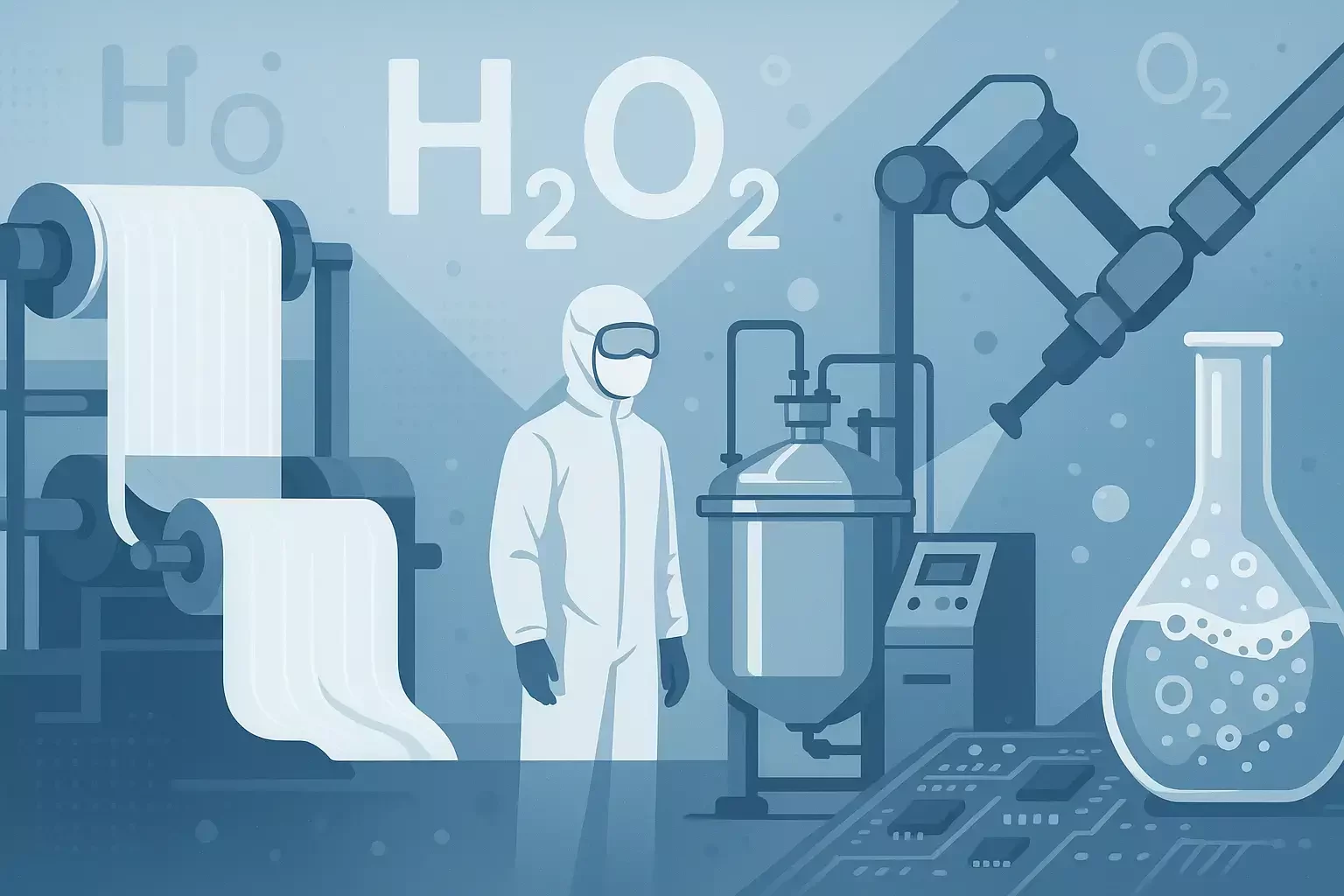Hydrogen peroxide (H₂O₂) is a deceptively simple molecule with extraordinary industrial potential. Its core strength lies in its ability to act as a powerful oxidizer and a clean, efficient agent in a wide array of chemical and manufacturing processes. While many know H₂O₂ as a household antiseptic, its true impact is felt across major industrial sectors where its versatility, safety profile, and environmental advantages make it a chemical of choice for engineers and manufacturers.
From purifying textiles and sterilizing pharmaceutical equipment to cleaning high-precision electronics and remediating polluted water, hydrogen peroxide is integral to the pursuit of efficiency, safety, and sustainability in modern industry. Its unique property of decomposing into just water and oxygen ensures that processes powered by H₂O₂ leave behind minimal environmental residue, aligning perfectly with contemporary goals of greener, safer, and more innovative industrial production.
Hydrogen peroxide (H₂O₂) has long been known as a household disinfectant, but in the world of modern industry, its clean power and versatile chemistry are indispensable. From textiles to pharmaceuticals and electronics, hydrogen peroxide’s role goes far beyond surface cleaning—fueling critical oxidation reactions, environmental stewardship, and the pursuit of product purity.
In this blog, we break down the most important industrial uses of hydrogen peroxide, sector by sector, highlighting how this simple molecule is at the heart of innovation and efficiency.

1. Textile Industry: Brightening and Bleaching
The textile industry relies on hydrogen peroxide as its primary bleaching and purification agent due to its effectiveness, safety, and environmental compatibility. When used in textile mills, H₂O₂ acts by breaking down natural colorants, pigments, and impurities found in raw cotton, linen, wool, and even synthetic fibers. The oxidative action of hydrogen peroxide not only whitens fabrics but also ensures that the removal of unwanted residues is thorough, leaving behind a clean substrate ready for subsequent processing.
Unlike chlorine-based bleaches—which can weaken fibers, produce toxic byproducts, and leave residues—hydrogen peroxide decomposes into just water and oxygen after use. This minimizes environmental impact and workplace hazards, aligning textile production with modern sustainability and safety standards. H₂O₂ also preserves fiber integrity and tensile strength, meaning finished textiles are not only brighter and whiter but also stronger and more durable.
In addition to bleaching, hydrogen peroxide is used in scouring (removal of natural waxes and oils), desizing (removal of starch applied during weaving), and as a pre-treatment before dyeing. The result is a more uniform, vibrant, and long-lasting color in finished products, plus reduced risk of yellowing or fabric damage over time. As the industry continues to move toward cleaner, greener technologies, hydrogen peroxide remains central to producing high-quality, eco-friendly textiles.
In textile manufacturing, hydrogen peroxide is the preferred bleaching agent for cotton, linen, wool, and synthetic fibers. Unlike chlorine-based bleaches, H₂O₂ breaks down safely into water and oxygen, producing brilliant white fabrics with minimal environmental impact. It removes natural pigments, residual starch, and impurities, preparing textiles for dyeing or finishing while maintaining fiber strength and quality. The result: cleaner, brighter, and longer-lasting fabrics—and a greener manufacturing process.
2. Electronics Manufacturing: High-Purity Cleaning and Etching
3. Pharmaceuticals: Synthesis and Sterilization
4. Environmental Applications: Advanced Water Treatment
Conclusion
Hydrogen peroxide stands at the forefront of industrial innovation due to its powerful oxidizing properties, versatility, and environmentally friendly nature. From bleaching and purifying textiles, to delivering ultra-clean surfaces in electronics manufacturing, to supporting the synthesis and sterilization processes vital for pharmaceuticals, H₂O₂’s applications are woven into the fabric of modern industry.
Its role in advanced environmental solutions, such as water and air treatment, highlights its value not only as a process chemical but also as a key contributor to sustainability and regulatory compliance. Because it breaks down into just water and oxygen, hydrogen peroxide leaves behind no harmful residues—helping industries meet their production goals while minimizing their ecological footprint.
As industries across the globe push toward greener, safer, and more efficient technologies, hydrogen peroxide will only become more essential. Its unique combination of performance, safety, and sustainability ensures that this simple molecule will continue powering progress, supporting cleaner production, and enabling a future where industry and environmental responsibility go hand in hand.




